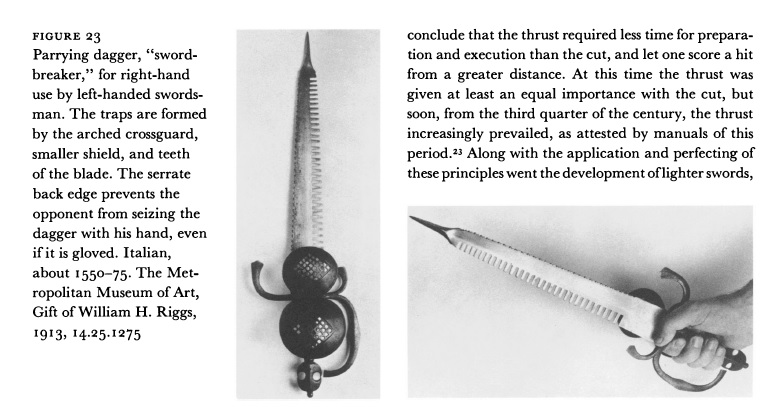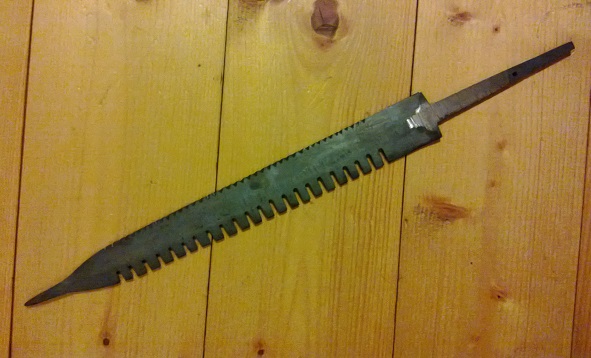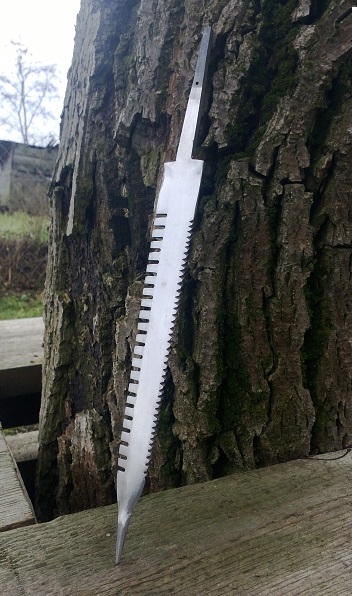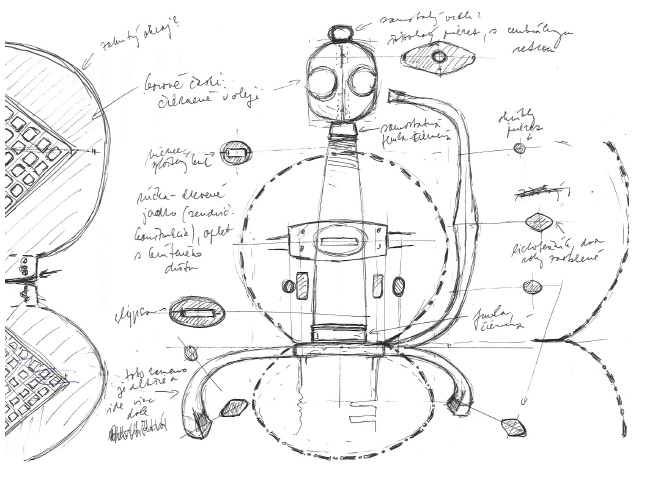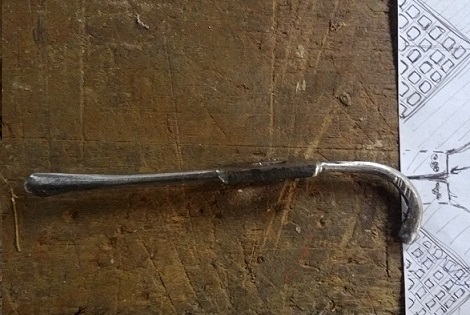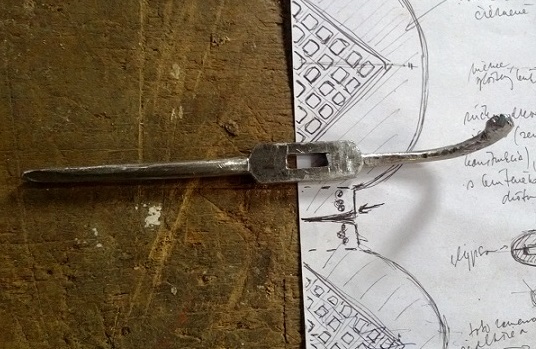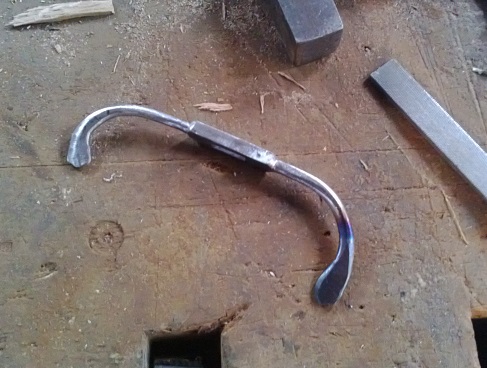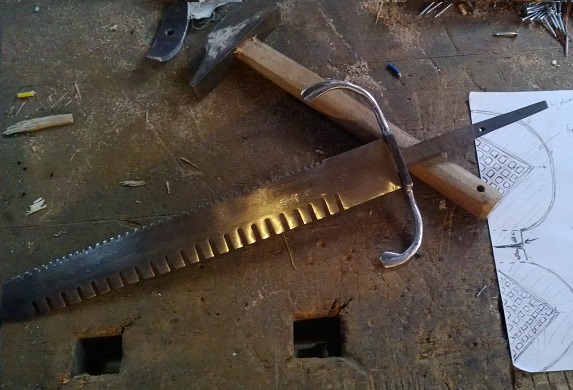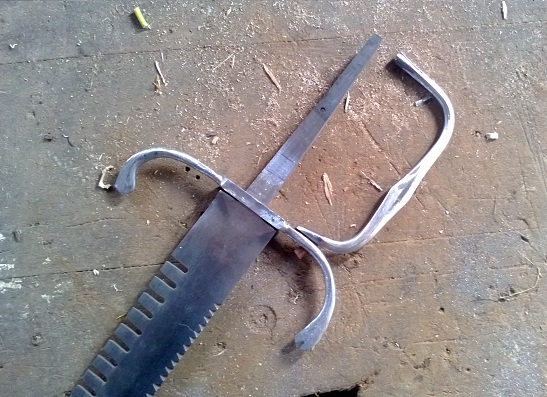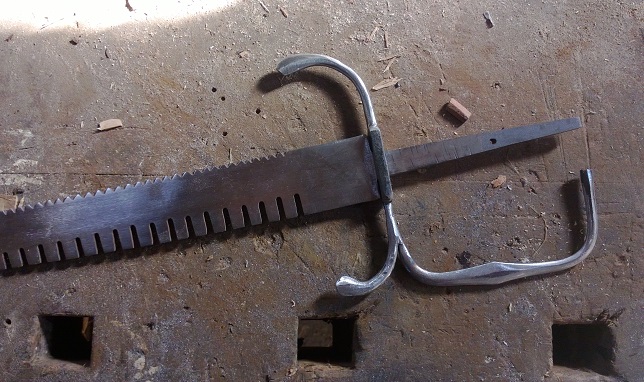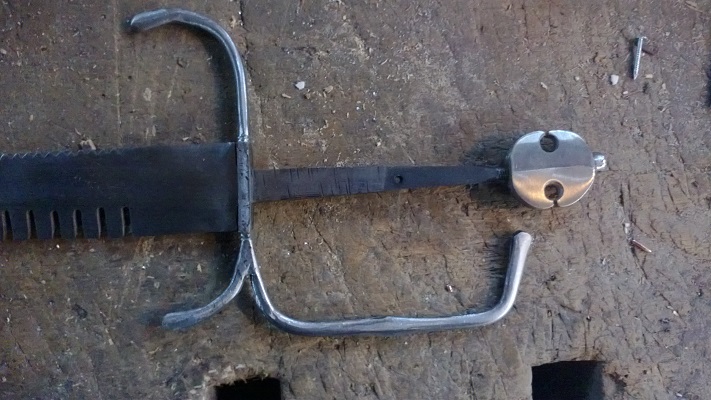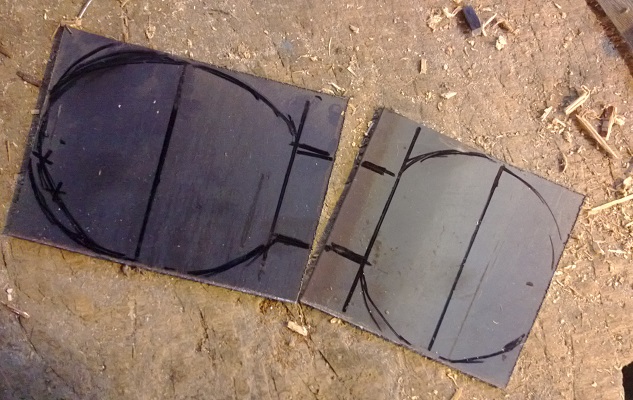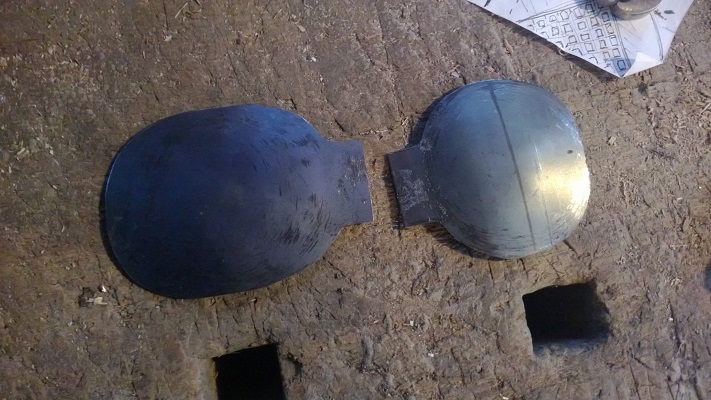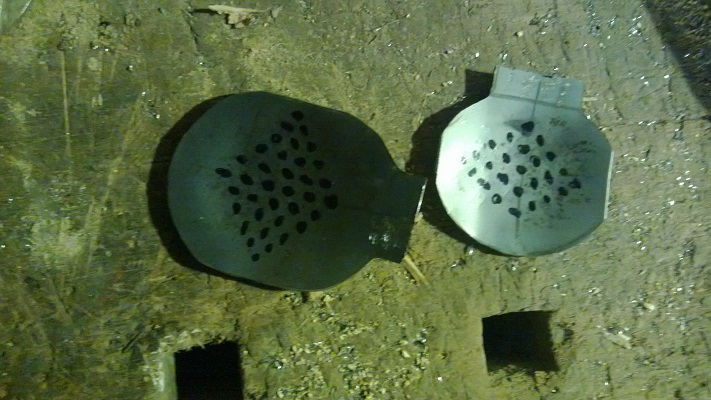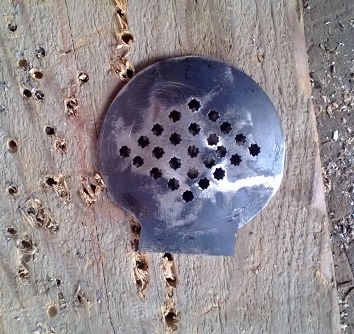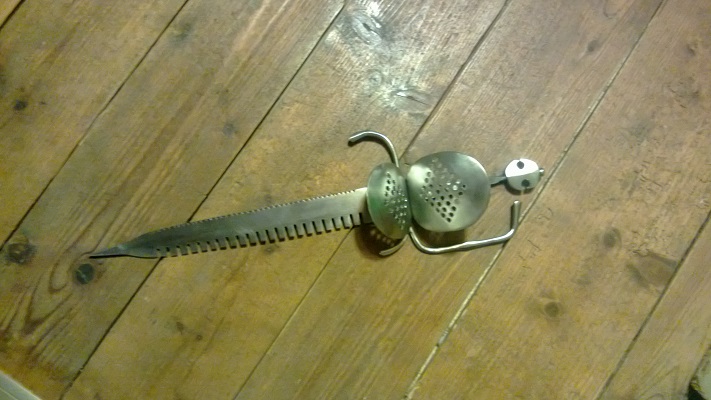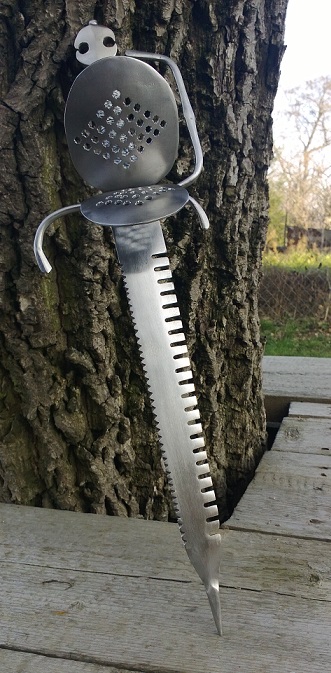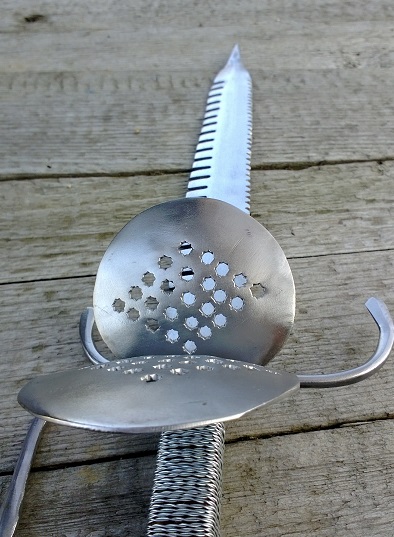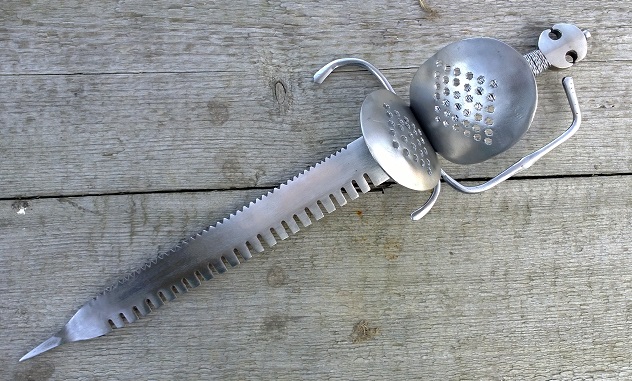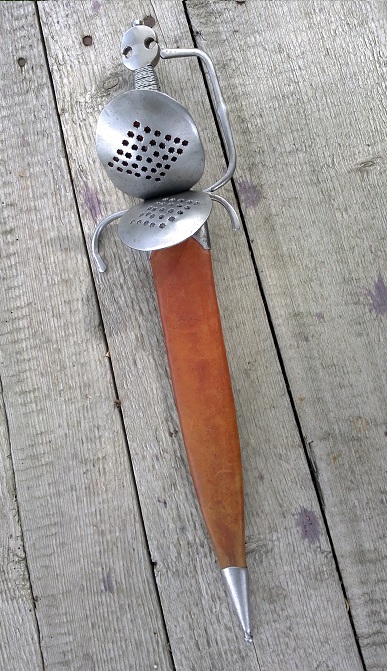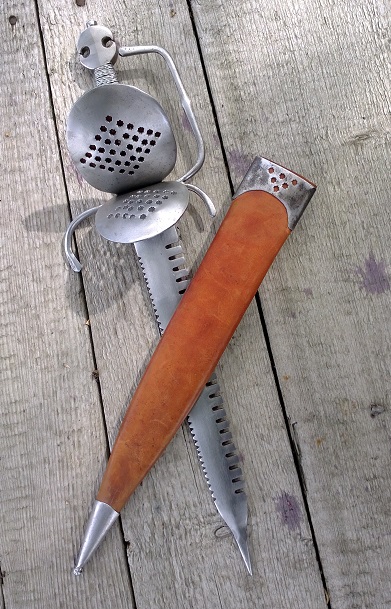Iīve found the picture from Leonid Tarassukīs "Some Notes on Parrying Daggers and Poniards" and I was really intrigued by itīs complexity - it seems that the makers did everything possible (with given level of technology) to make this dagger an efficient blade-catcher. It has the downward curved crossguard, downward turned shell-guard, and the teeth on the true edge. With another shell-guard and the arched crossguard to protect the hand, and the serrate false edge, and the reinforced point it is an interesting beast (and a challenge to make:))
First picture shows the original. I wanted to make an exact copy, but could not find many more details. So in the end I had to go with an "inspired" piece, and maybe, some time later when I manage to get more info, I will make another, more accurate one.
It has all started with cutting the blade some two months back. Itīs 40 cm long and 3.5 cm wide at the crossguard. Itīs 5 mm thick, thinning down to 2.5 mm close to the reinforced point, which is 5 mm thick again. The true edge has a row of teeth, 14 - 10 mm deep and 3 mm wide; serrate false edge was hand-filed. Blade has a lenticular cross-section, but itīs not made sharp on any of the sides (serrate edge is 3-2 mm thick to allow file-work, true edge is 1 mm thick as I intend to use this for fencing trainings).
All work was done with an angle grinder, hand-files, small belt grinder (only for removing scratches from grinding ) and sand-paper. Finished piece was sent to a professional company for heat treatment, and then came the difficult part - I had to wait two long months:)
Blades arrived yesterday, so I took a quick picture - thatīs No. 2. Now the fun begins:)
